Apple Watch 4 review
Update: A new rumor suggests Apple may be ready to launch the ECG feature on the Apple Watch 4. At launch it'll be restricted just to the US, but it's expected to come before the end of 2018 in the watchOS 5.1.2 update.
If you're looking for something different from Apple in the smartwatch space, then you've got it now: the Apple Watch 4 has as an upgraded design and display, with the intent of making one of the most popular timepieces in the world more desirable.
The larger screen and more rounded edges are much nicer to look at and offer more functionality, and it also adds in some extra features too that are designed for those who are a little more vulnerable or suffer certain health conditions.
If you’re on the original Apple Watch or even the Series 2 model, you’re probably thinking that it’s time to get something new on your arm - and Apple’s recognized that with the decision to change things up.
The Apple Watch 4 is still one of the more expensive smartwatches out there, but it’s also the most popular (according to Apple) - so what do the new features bring and are they really worth the upgrade?
Apple Watch 4 price and release date
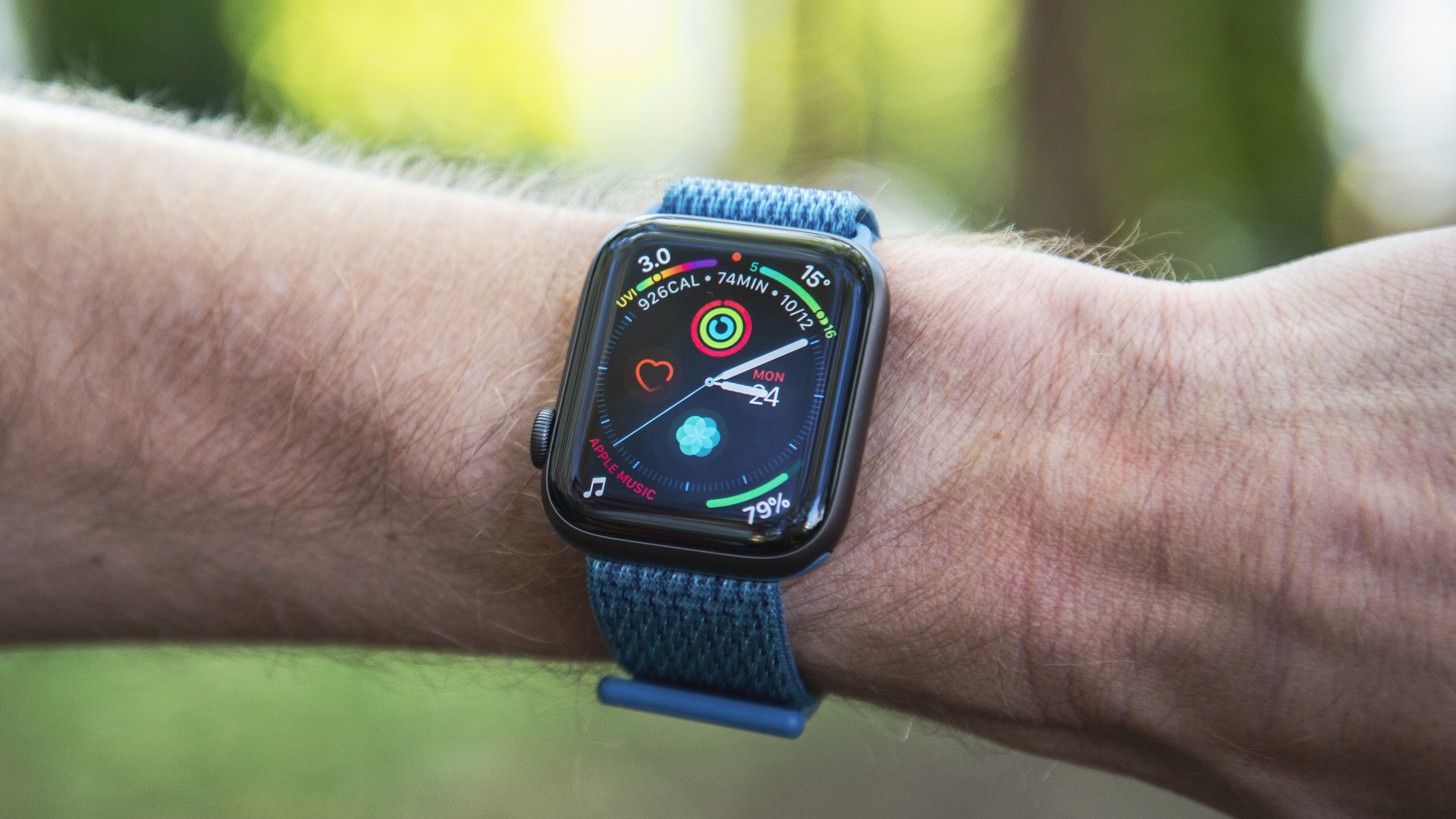
The Apple Watch 4 is available in four variants: 40mm and 44mm sizes, and with or without LTE. In terms of the Apple Watch 4 release date, you can buy it now - it came out in September 2018 on the same day as the iPhone XS and iPhone XS Max.
The GPS-only version starts at $399 / £399 / AU$599 for the smallest version, and $429 / £429 / AU$649 for the larger one 44mm one.
The cellular option starts at $499 / £499 / AU$749 for the 40mm and $529 / £529 / AU$799 for the larger watch.
If you're looking for a contract with the LTE watch, you'll be looking at carriers like AT&T, Verizon, Sprint and T-Mobile in the US. If you’re in the UK, EE offers deals for the LTE version of the watch as it did for the Apple Watch 3, and Vodafone has joined the party with the Watch 4 by offering a data connection too.
- Our selection of the best Apple Watch 4 deals
Key features
- Health features only seen on the Apple Watch
- Quite niche, but useful
- Digital Crown haptic feedback is ace
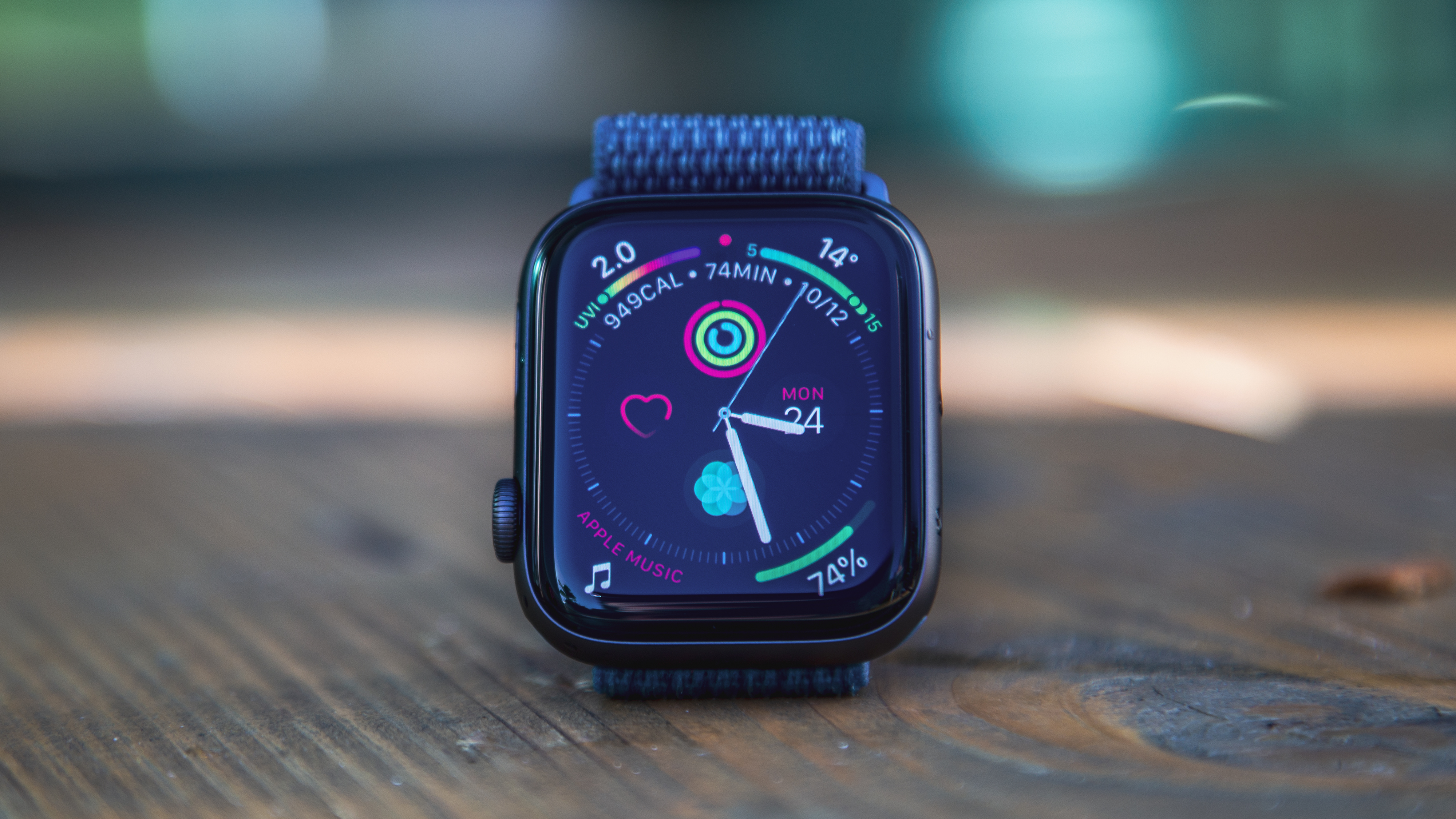
The Apple Watch 4's key feature is really its design - we say that because while the extra health benefits are something that are worthy and really make this an attractive device for those in need of them, the pool of people this is relevant to is smaller than just those looking for a new watch.
We're also not able to test some of the key new health features - specifically the electro-cardiogram feature (ECG) as that's not enabled yet in the US, and won't be coming to the rest of the world for even longer. Rumor has it the feature will be coming to US users in the watchOS 5.1.2 update, but that has yet to be confirmed by Apple.
However, we were able to see it in action during our demonstration from Apple, where you need to activate the app on the phone and then hold the Digital Crown down to complete the electrical circuit in your body.
This spits out a set of data from the ECG to your Health app on the iPhone, which can be exported as a PDF and give information on rhythm to a physician, plus you're able to write notes to contextualize what was happening at the same time.
The other thing we weren't able to really test was the new fall detection, as you have to go down a certain way and remain there for a while to activate the feature.
We did try to fall, but it was getting a little embarrassing and perhaps we need to commit harder to the testing - we'll update the review if we get braver in the coming months.
However, one thing that did worry us a little about this feature is battery life - while it's great to see that fall detection exists, and will be set up automatically for those over 65, the fact that you really need to charge the iPhone once a day is going to be harder to remember for some users and that could mean their safety blanket (or for those that bought the Watch 4 in the first place to safeguard a loved one) is redundant if the Watch has no power.

There's also a set of heart rate notifications, including one that's looking out for atrial fibrillation (AF), meaning you'll get a pop-up if there's anything that looks sketchy with your heart with regards to this condition, which could lead to life-threatening complications.
The Watch 4 also comes with an alert system if your heart rate goes too low or high: should your heart rate spike or fall hard for no reason for a long enough period (around 10 minutes) you'll get an alert telling you all is not well, and maybe your should see a physician.
We have a rather low heart rate from regular running training, and the update did ping in from time to time to reference to us that the heart rate testing was working.
The other key upgrade beyond the design, which we'll get onto in a minute, is more hidden in the heart of the Apple Watch 4 - there are sweet touches like a (virtually) clicking Digital Crown that feels like it's clocking through lists on the wrist. It even makes a slight noise, and the whole system is incredibly pleasing.
There are a number of new features in WatchOS 5, but it feels weird talking about them here because as a platform it's going to come to multiple old models from Apple, possibly all the way back to Series 1 of the Apple Watch.
The main one that we're most impressed with is the fact that you can now use the Apple Watch 4 for a number of different exercises - and there's automatic exercise tracking too.
We'll get into the nuts and bolts of the fitness side of things a little later on in this review, but overall the fitness capabilities of this Watch are impressive and a genuine step forward once more.
That's not to say there aren't loads of cool new features in the new Watch software - we most love the Walkie-Talkie mode. One of our best pals was also testing the Watch and we instantly began sending them short voice messages, the way that some people don't talk but send short voice messages in a slight more confusing race.

Raising your wrist to your mouth in order to have that conversation with a friend does feel like a real Dick Tracy moment - it feels partly ridiculous, but also quite fun - and thanks to the improved speaker and microphone placement (now separated left and right), much easier to use.
We also remembered that we had to say 'Over' at the end of sentence, lest the airwaves get clogged with people just randomly rabbiting on. OK, nobody needs to say that, but it kinds of shows that the retro vibe is there and is something we want to fully get involved with.
The other WatchOS 5 improvements are really rather minor - such as richer notifications or weather data that includes things like the UV index or air quality outside. However, as the Watch does less than your all-singing smartphone, it’s much easier to notice these little changes.
Design and screen
- Much larger design
- Screen far more usable
- Lightweight
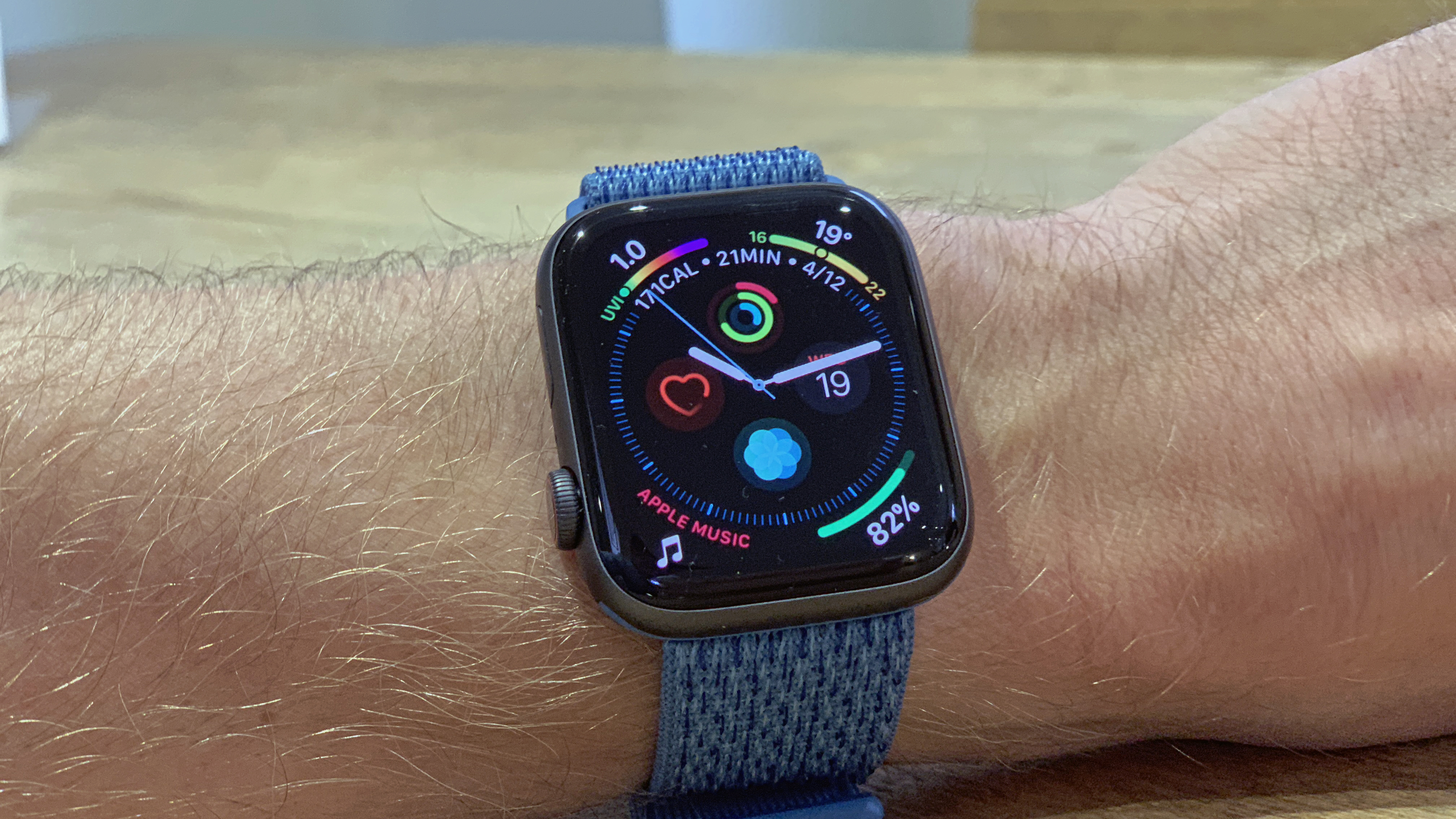
If you’re going to notice something about this watch though, it’s that it looks bloomin’ different. Perhaps not to someone who has never seen an Apple Watch before, but to those who have will instantly see that the screen is bigger - 30% bigger, in fact.
While it’s nowhere near edge-to-edge as some are suggesting it is, it’s certainly a lot larger and more rounded, giving the impression of a rounder timepiece without losing the benefit of a square display.
The overall chassis is thinner too - not noticeably so over previous models, but the weight is minimal on the wrist and really is hard to notice sometimes - this is not a weighty digital timepiece.
The Digital Crown and power / multi-tasking button on the side of the Watch 4 have been improved as well - we’ve talked about the former element already in this review, but the power button also feels like it’s got a more premium click when pushed in.
The back of the Apple Watch 4 has been upgraded - still using the ceramic material to let the radio signal through, it’s been combined with sapphire glass to allow placement of the radio antenna around the edge of the watch, thus making it easier to let signal in without your wrist masking the frequency.
It looks more bulbous in truth, but because it’s gently curved and wider, it’s not something you feel on the wrist when wearing.
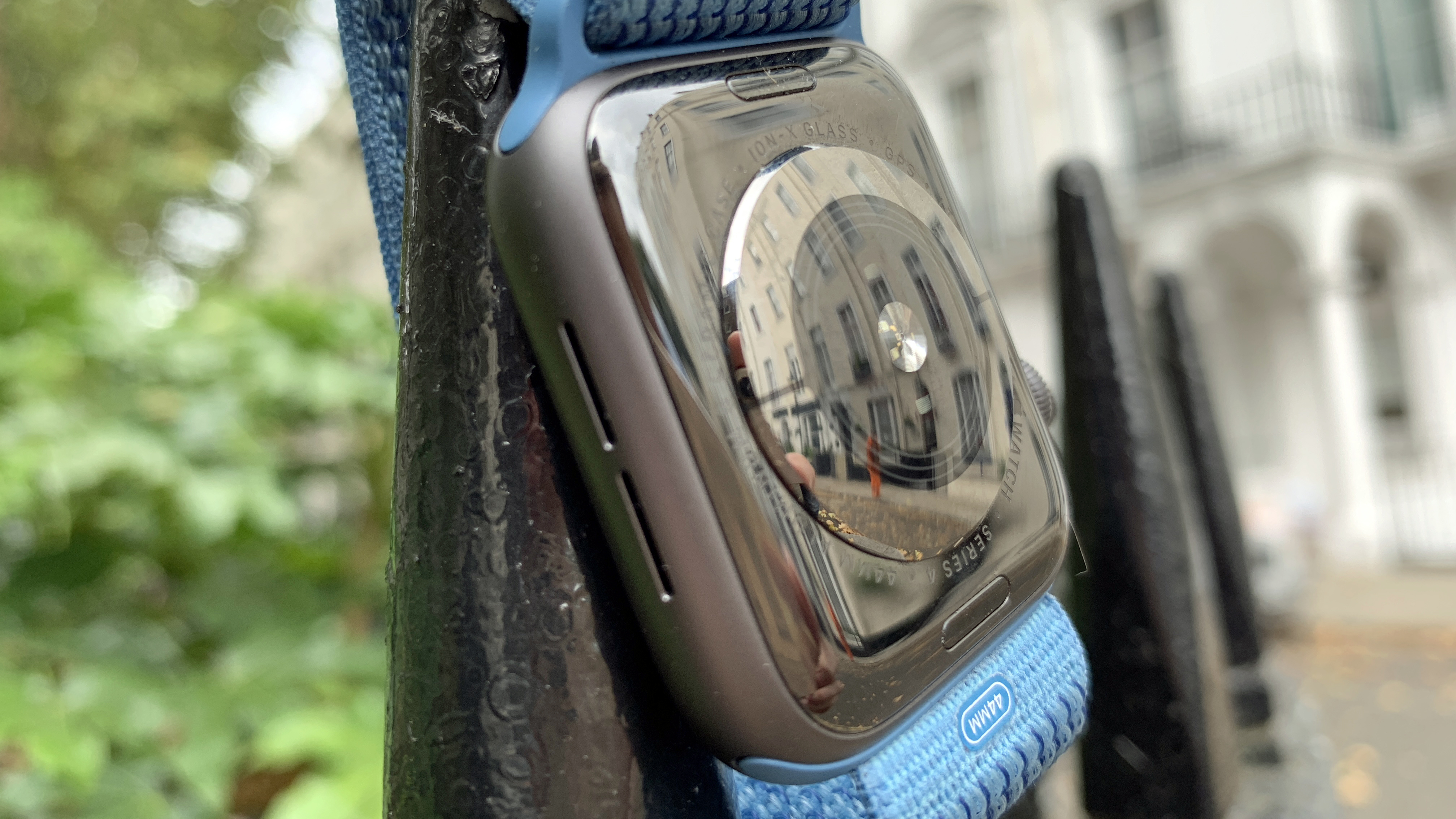
Going back to the screen, and we’re really impressed with how Apple’s managed to fit so much more into the device. Sure, the sizes are 40mm and 44mm, which is a little larger than the 38mm and 42mm options previously, but the increase in screen real estate is something pretty useful.
Not only that, but as mentioned: Apple has somehow managed to make a square look more circular. Some tappable options at the bottom of the display are rounded at the corners, making everything look a bit more circular.
That extra screen real estate has allowed for some new watch faces to be created - namely the infograph display that contains eight complications of your choosing. It’s colorful indeed on the OLED screen Apple is using here, and being able to choose so many different options to tap is awesome.
We do wish that Apple would offer more digital clocks in its watch faces, as it loves the analogue hands in its new suite of options - and we certainly can’t understand why there’s no third party store for developers to make their own faces.
Here you can see a gallery of the new watch faces Apple is offering, with the elemental options like vapor, fire and water all created using a high-speed camera, and the results do look more dynamic as a result.
These will be available on the Apple Watch 3 and lower, but will be a circle rather than the full display you’re seeing here.
Back to the design and the speaker placement is certainly better - on the right and away from the microphone, that’s instantly going to lead to better audio response.
However, while we could generally be heard OK, when using the Apple Watch to make and receive voice calls you really have to be in a quiet environment to make that 50% louder speaker really work.
When asking Siri to set a timer in a hushed kitchen, she blared out ‘SURE, TEN MINUTES AND COUNTING’ and we were initially impressed with the volume.

However, asking Siri to make a call in the car wasn’t a useful experience - even a touch of ambient noise made it impossible to hear the person on the other end, and that made the feature moot.
We even had a few issues with Siri at the start of our reviewing period, when the Watch would hear our command but decide to not take any action - but this was solved when re-pairing the Watch 4 to our phone.
Actually, we say 'solved', but like before with other models there were moments when it would still hang for no reason when asked to do simple things like check the weather.
The final thought on the design element is that it’s excellent to see that the old watch straps - designed for smaller bodies of watch - are still going to fit the new range, thus saving a whole suite of straps on the market from going to waste.
The Apple Watch series has slowly become more and more about fitness over fashion, and that’s an excellent move in our opinion.
There are two elements to the fitness prowess on the Apple Watch 4: the alerts to keep you active, and the tracking of actual exercise.
The alerts are there to help you close the activity rings on your watch - if you’ve never used one of Apple’s timepieces before, this will be the central tenet of how you get prodded when using the device.
The stand prompt happens around once an hour, but more recently the Apple Watch 3 and now Watch 4 learn your actions, meaning they’ll be able to spot when you’re most active and when you’re likely to fall behind your goal.
On the Watch 3 that sometimes meant being told at 11PM to get moving again, despite there not really being enough hours left in the day and that never being a time we usually exercised.
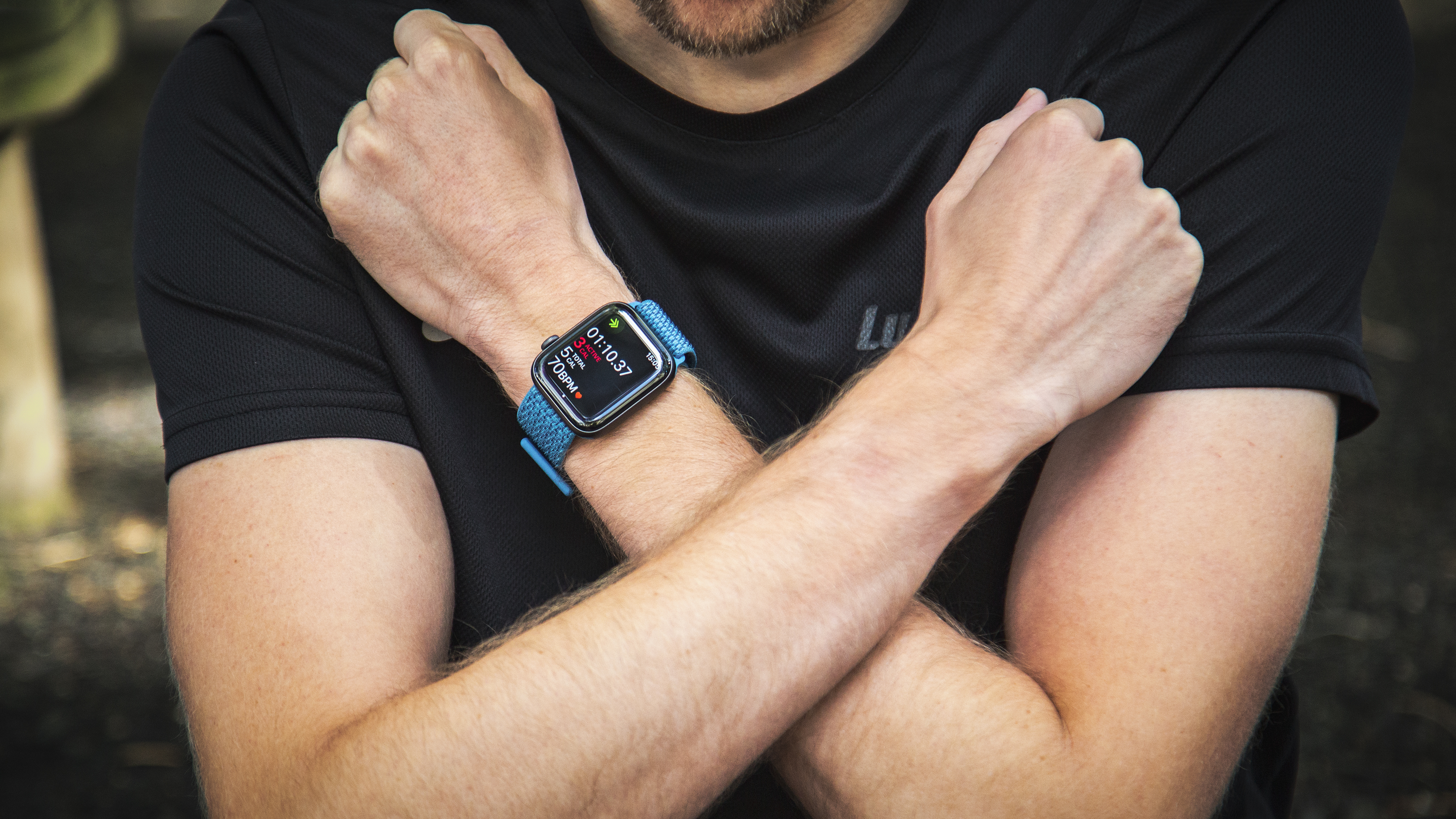
Thankfully that’s not happened on the Apple Watch 4, with the only prompt we’ve really had to be more active is a nudge that we’ve not been as active in the early afternoon, when our workout was scheduled for the evening.
Over time it seems the Watch has learned that as the same notification hasn't appeared again.
The second part of the fitness element is the act of exercising itself - and here's a place where Apple has stepped things up a notch on the new Watch 4.
With automatic exercise detection, we're looking at a device that can easily keep up with you when you forget to start something. It's not pervasive throughout the exercise spectrum - you won't get alerts that the Watch has noticed you're cycling, for instance (although we're not sure if we should, as there's no list we can find), but if you're starting to run or walk briskly you'll get an alert telling you that there's an exercise in progress and asking if you want to track it.
We tried this on a run and it popped up after just six minutes, allowing us to save the activity up to that point - that's useful and picks it up nicely, although won't stop until you've stopped for a few minutes.
However, the issue is that the data it collects before it notices the run isn't that accurate - curiously, while the distances and times were correct on the Apple Watch 4 compared to a Garmin device that we were using on the other wrist, the Apple Watch 4 had us down as much faster than the relaxed pace we were doing.
That doesn't make a lot of sense, but it makes us less inclined to believe the veracity of findings when you know that initially there was no GPS lock to accurately track you.
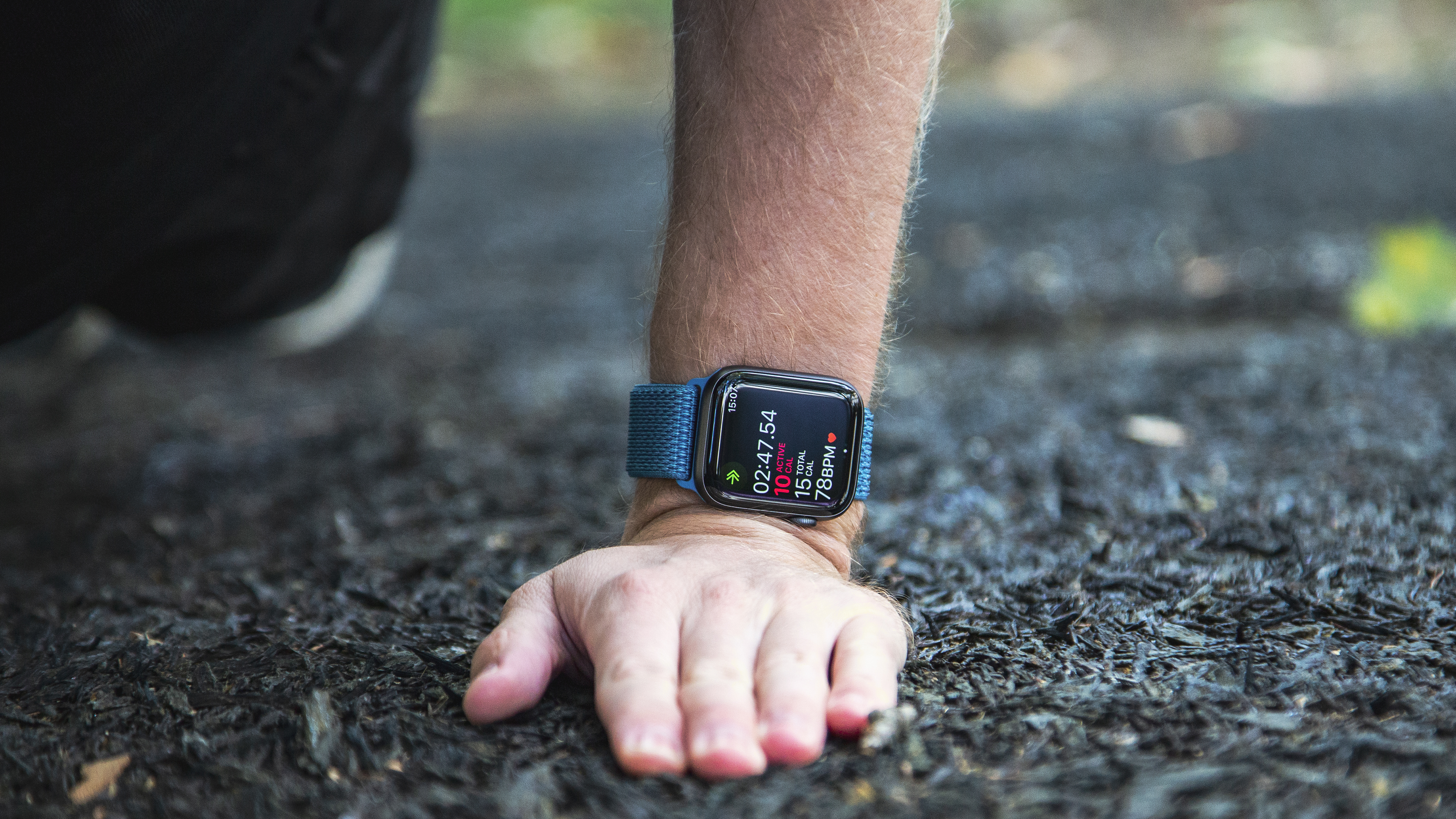
Once the run was properly underway, we enjoyed what the Apple Watch had to offer: the usual metrics of distance, pace, heart rate and average pace were all there - you'll need to set up Rolling Pace, where it will show you how fast you managed to run from a mile or a kilometer before your current step.
This is handy for combining both the your true pace at that moment with your average effort for that lap... it's a smart mix and works pretty well.
There's also the activity competition, but here's a word of warning: if you spend more than 30 minutes a week exercising, the chances of you finding someone who will want to partner with you is pretty low at this point. We've been scouting around for someone that would want to actually play with us for the week, but nobody came forward.
Anyway, we digress: back to the exercise and the findings for the running sessions we did showed that things haven't enormously changed when it comes to fitness on the new Apple Watch.
The overall pace and distance is a little on the generous side with Apple, meaning you never really rely on it during a race or something. We tried it on a half-marathon course, and while this did have a few trees around it for most of the race, the end result was still half a mile short.
This was quite anomalous to anything else we'd seen during our time with the Apple Watch, with other distances coming out fine, but clearly it had an issue with tree cover.
The heart rate monitor has was mostly accurate during our time with the Watch, but on a cold weather run it lost our pulse once more. Again though, even when it was working correctly it still has fewer data points than a Garmin or a chest strap, with the graphs of effort showing some straight lines where the pulse apparently didn't change at all for a minute or two.
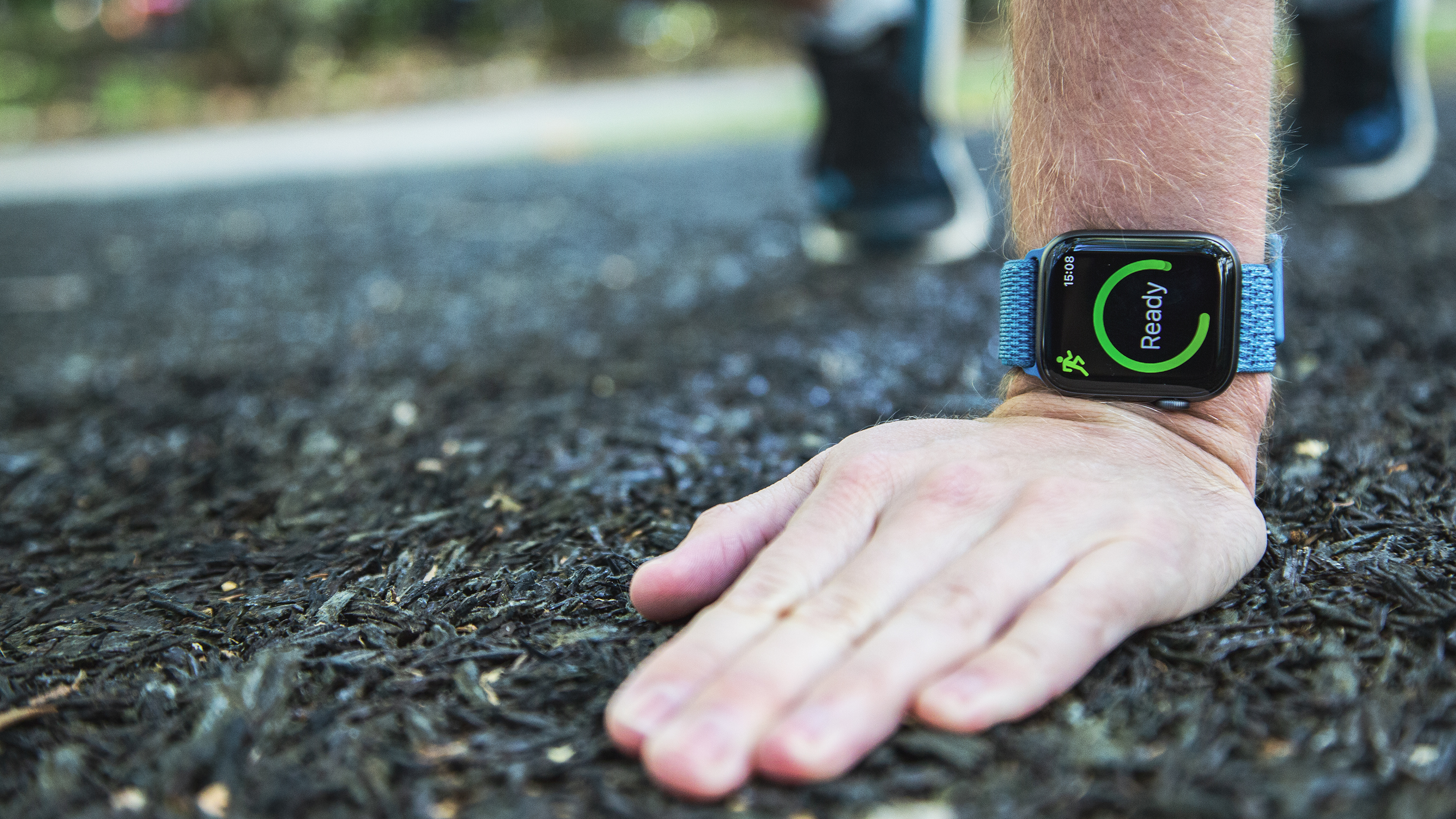
We also tried a spot of yoga, to see how that was tracked, and it's unsurprisingly just stretching around with the Apple Watch running alongside - we assume there's a level of smarts within that tracks the calorie burn that little bit harder.
There's also swimming in the mix too, with the waterproofing on the Apple Watch 4 has been improved to 5ATM depth for those that like to get a little deeper into the water.
There's actually too many to test - strength training, rowing machines to name but a few. These are all specifically studied to give proper calorie burn when using the device. These things are useful when you're trying to track what you're actually doing and want to get the right calorific burn from the equation so you can offset that against calories taken in - which there are no inbuilt apps for.
However, the Apple Watch 4 still seems like a device that's too broad. The Workouts app, the main hub where you track your workouts is powerful enough, but the data is a little siloed away from sharing outside of the Apple ecosystem (although, of course, not impossible if you use something like RunGap, although that's still not perfect).
But there's no function to set up an interval training sessions, or to dig further into your metrics post run, or offer more customized alerts to eat, drink, rest or pull in a gel a a reminder.
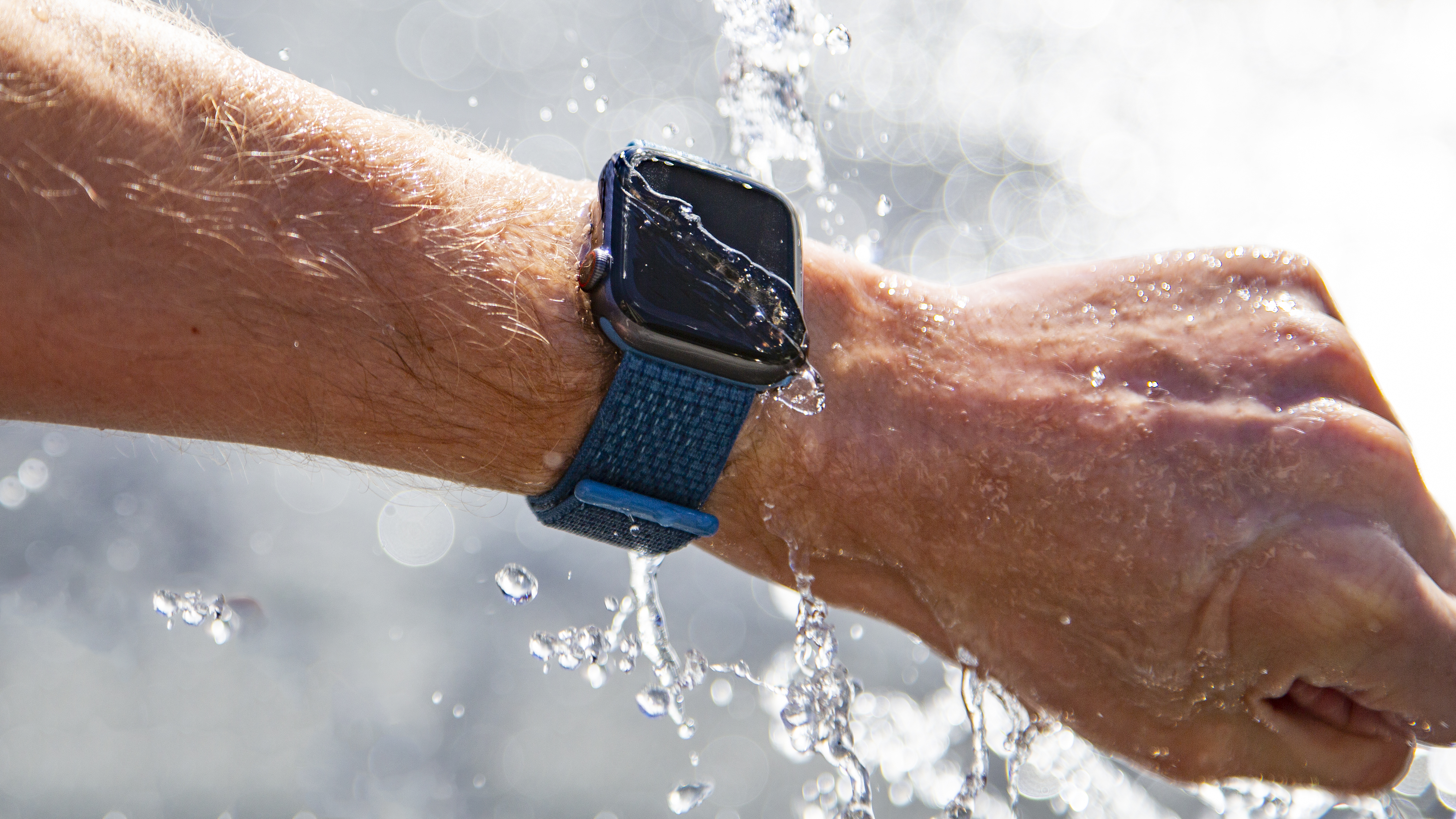
The Apple Watch does do a lot of excellent options for fitness, but it isn't a device anywhere nearly as accomplished by the likes of dedicated running watch makers like Polar or Garmin. It’s more a jack-of-all-trades, rather than something that excels anywhere.
We found that it was fine for an everyday run, and firing up the third party app of Strava worked well enough to track and upload the information we wanted it to, but without the ability to define your workouts on a more granular level, the Apple Watch will always feel like a ‘my first fitness watch’ - something you upgrade from if you start getting hard into an activity.
If what you really want is something that will be your fitness buddy as you just workout generally, and you really get a kick out of competing with pals, then this is a great option. It’s just not going to help you batter your marathon time if you’re looking for something a little quicker than average.
The battery life of the Apple Watch brigade has always been something of a mystery to us: Apple keeps quoting an 18-hour, all-day battery life for its watches, and it's doing the same for the Watch 4 - three quarters of a day will get you nicely home to a charger before needing to reach for the power-saving mode that will just fire up the time when prodded and nothing else.
How did we find the experience? Once again, far better. Let's look at some stats: taking the Apple Watch 4 off the charger at 7.30AM, we were still left with 44% battery at midnight before going to bed.
Sleeping for seven hours and leaving the Watch on overnight, we saw it drop abother 21% in that time, meaning we needed to stick it on a charger pretty quickly if we were going to get through the day. The good news is the magnetic charging cable still exists - so you can easily just get juicing on your Apple Watch (although be careful that you don't kick it off the charge, which we've done very easily multiple times.
Our confidence that the Apple Watch 4 could last for two days seems to be founded well, as the next test of the device - taking it off charge at 11AM - we saw a battery drain of 52% from the morning until 2AM, showing that the longevity seems to be around two days if you don't do any dedicated exercise with this device.
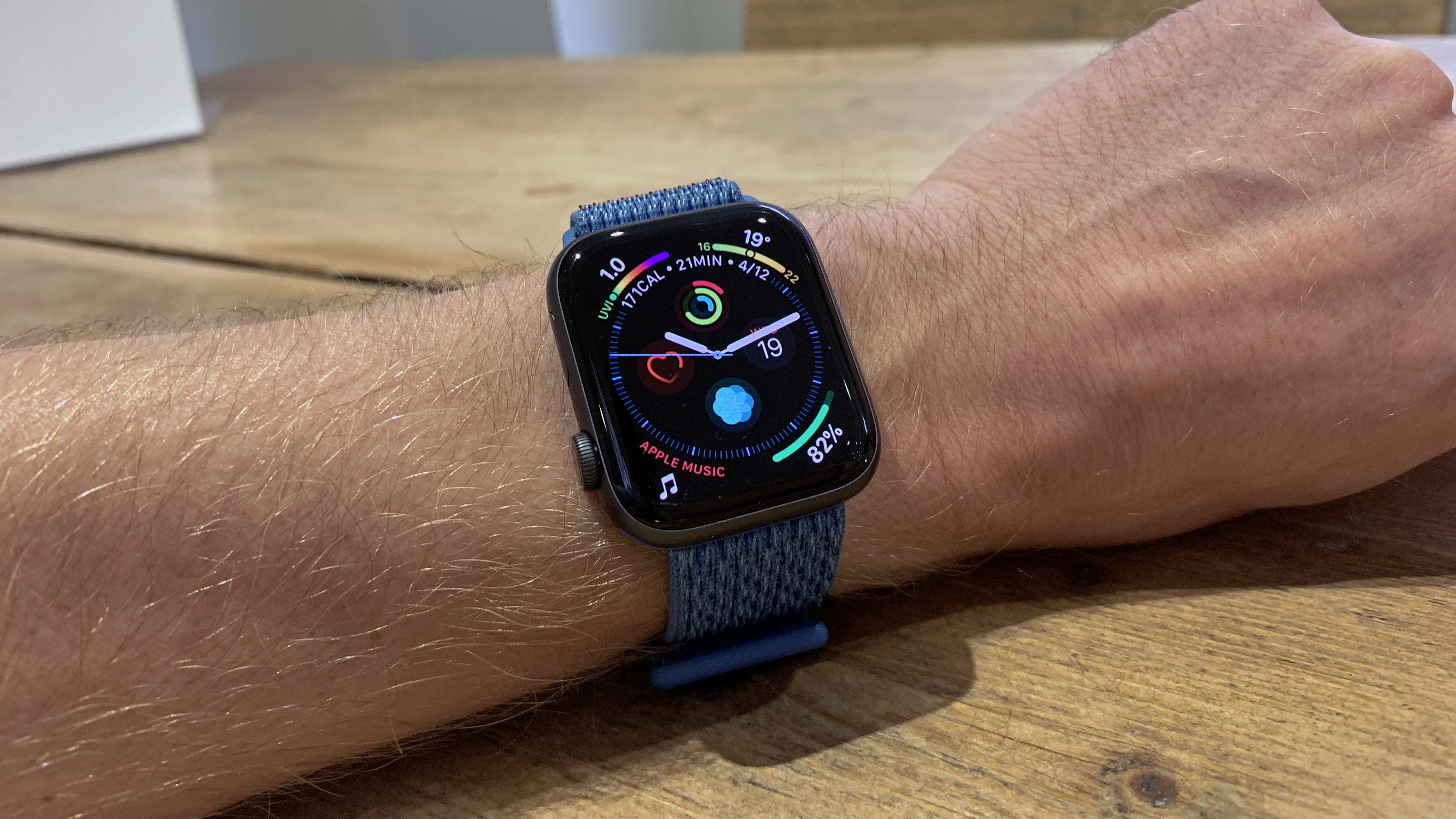
However, as you might expect, when pumping up the GPS and going for a dedicated run, you'll destroy the battery faster than you would just having it tethered to your phone. We went out for an 8.5 mile run for an hour with the Watch and listened to music for half of that - and that saw the battery drain reach 20% in that time.
Take off the extra power needed to play that music (it was Daft Punk on repeat because that was the only song that had inexplicably transferred, and there's only so many times you can hear the same upbeat melodies before wanting to rip off your own ears) and you'll around a 15-18% drop off.
This is bang on the six hours that Apple is touting on GPS - in a bid to win over more fitness enthusiasts looking to improve their time but not really push the limit of what a Watch can do.
We then decided to test the Apple Watch's capabilities when tethered to a phone, and therefore not needing the GPS or to stream music - there, we saw a two and a half hour run lose only 21%, so if you wanted just a second screen during a race, the Watch 4 will be able to last for ages.
The battery life on the Apple Watch 4 far exceeds Apple's 18-hour claims - we need to find out the conditions the brand is basing this usage pattern on - as far as we can tell you'll sometimes get two days' use out of this watch if you're a bit lighter on usage.
We should say it's impressive that Apple has managed to thrust so much technology and tracking equipment into the small frame and still maintain the battery as it has, but the new S4 chipset inside certainly makes things zip along faster than before as well as being that little bit more efficient too as a result.
A recent iFixit teardown has shown that the battery is actually smaller in the Watch 4 over the Watch 3, and yet we found that the power drain was largely similar, even with more pixels to power.
The new W3 wireless chip can connect to your phone or a pair of headphones easily to send data over more quickly, which is another boost when you're trying to save battery (although Apple mandates that the Watch 4 must be on charge when it's taking in a load of data like Music or podcast upgrades.
That said, Apple is still really missing a trick here. If it could get to a four day battery life somehow - and we say somehow as it’s not possible to just cram more mAh into the frame and suddenly realize double the longevity, although it has shed some this year - then the Watch 4 could be a great sleep tracker as well.
That’s the bit that feels missing for us - not being able to track sleep is a big miss here and we feel it’s the kind of thing Apple could do rather well.
Music and podcasts
- Larger capacity for more music
- Podcasts now supported
- Stream music through data without a connected phone
Having music coming from your wrist is an absolute dream when you’re exercising, as the need for a bulky phone is wiped away.
Spotify might be the music service of choice for many, but if you’re more into Apple Music then you’ll really get a kick out of the Watch 4. With 16GB of onboard storage, you can chuck loads of songs in there, and play them all from your arm via Bluetooth headphones.
Siri is pretty handy at helping you call up playlists on the go, tuning into Beats radio or playing some songs based on the mood you’re in - whether that’s workout music or something more focused to help you concentrate.
Apple also cleverly makes the first thing you see when playing music - either from your phone or on the watch - the Now Playing screen, so you’ve always got easy access to your tune control.
With WatchOS 5, Podcasts are finally supported, and as they’re a little lighter on the storage you can download reams of the latest stuff and it’ll transfer quietly to your device to be played back at your leisure.
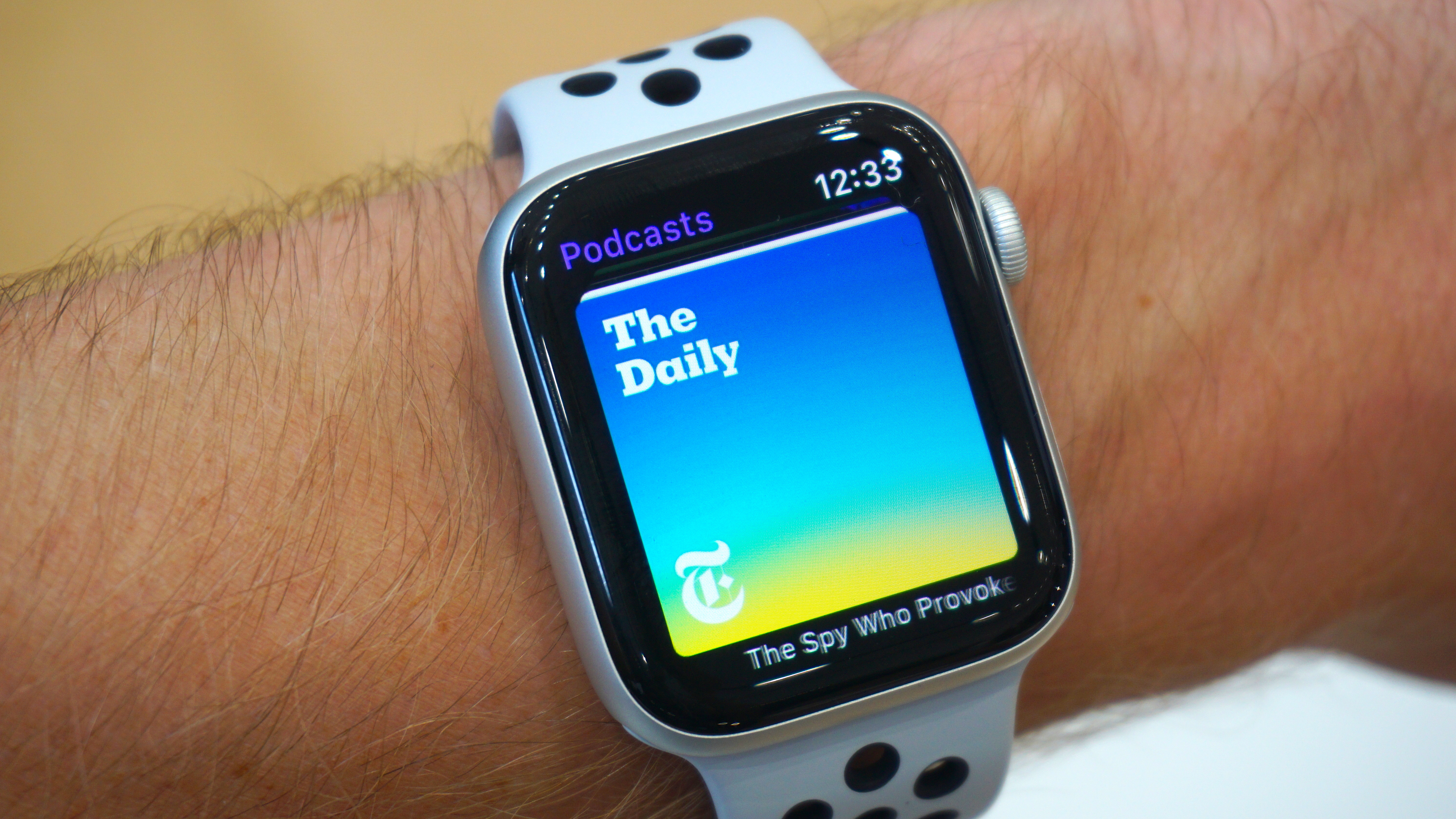
What about getting content onto the Watch though? Initially, when putting music on the Apple Watch we encountered something of an issue: we couldn’t get anything to sync across.
Yes, we sorted it (the issue of having more than one Apple Watch previously paired was the cause).
However, it highlighted a big issue you’ll have using the Apple Watch 4 when away from the iPhone: it’s very hard to check whether songs or podcasts have synced across properly.
For instance, we looked at the storage and it said that we had 2.2GB of songs in there. This was right, as we’d asked the Watch, which should have 16GB of onboard storage, to download loads of playlists when it was connected to power overnight.
We went out with music playing over a pair of Bluetooth headphones - excellent stuff, no worries with that. After two songs, however, the Watch wouldn’t play any longer and just told us to connect to the internet.
Back at the ranch, we tried to get things to sync, but despite having all the playlists confirmed and the Watch 4 on power, it still didn’t work. Except… two songs had somehow made it across, out of a request of thousands.
The same thing happened with the podcasts - set off with the sound playing and 10 minutes later it cut out. There’s no clear and obvious way of knowing if a song or podcast has made it onto the Watch, short of opening the app (where you have to connect Bluetooth headphones to enter the music app, irritatingly you can’t play it through the louder speaker) to see which songs have actually downloaded.
However, this is easily rectified - as we said, once we unpaired the phone and watch and then re-connected them, songs started to stream across - but not all of them, despite leaving the Watch on power by the device. It's just too hard and slow of a process to be comfortable with.
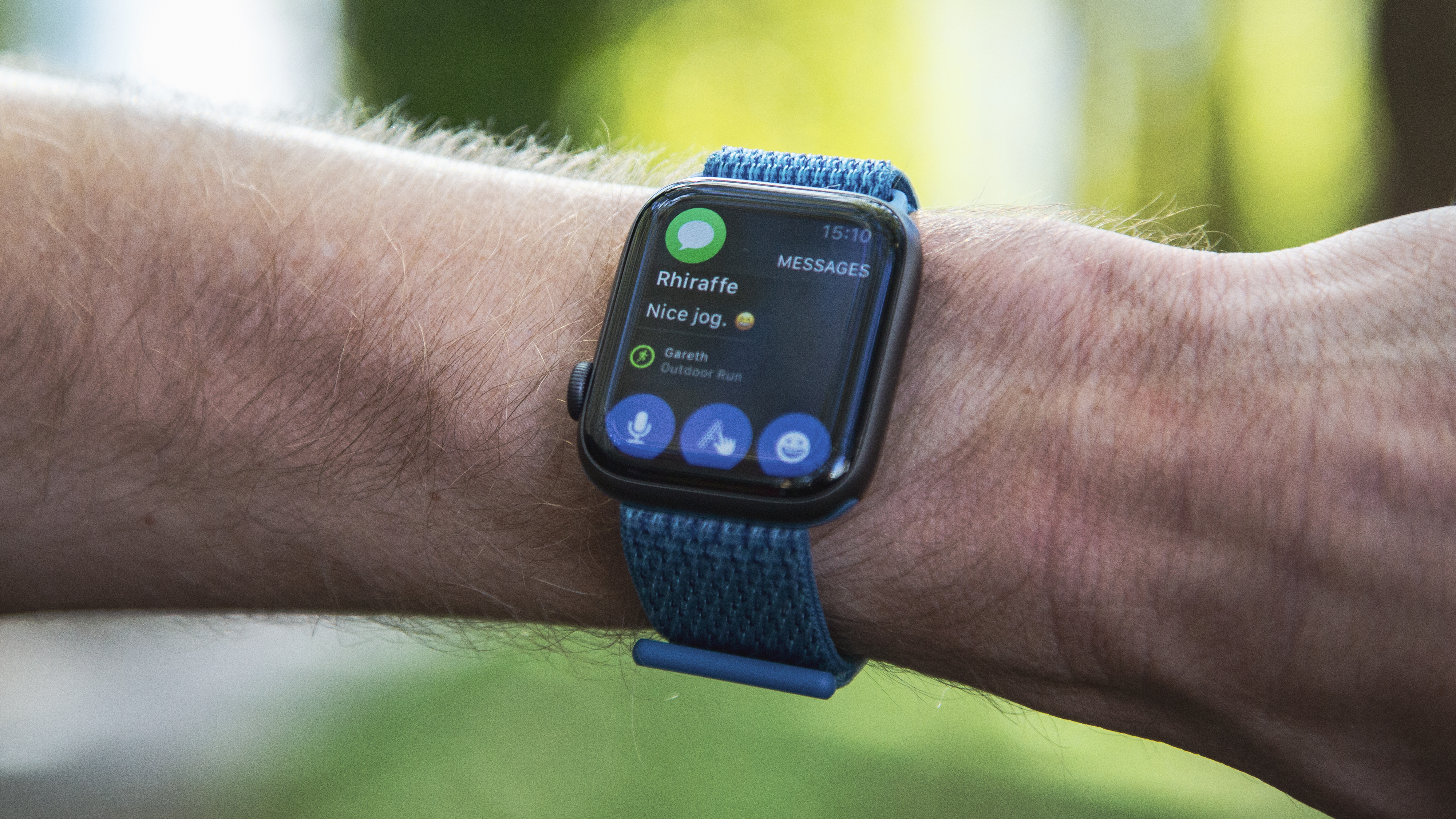
Usually we’d say this isn’t much of an issue, but we’re now in a world where many people will be seeing the Watch 4 as the second smartwatch they’ve bought from Apple, and they'll be expecting more from the device.
The other option for listening to music or podcasts is to use the LTE data connection when paired with a phone running a network that supports Watch data (you can see details of those that are supported in the UK and US in the section on the front page of this review).
We haven’t been able to test the data connection on our Watch 4 just yet, but we’ll be updating this review in the coming days to reflect this functionality. However, we’re assured that it’s the same as on the Watch 3 from last year, and we found that the data was an excellent way to listen to music on the go if you can’t be bothered to sync it across.
You’ll mostly be connected to your phone, so battery life on LTE will rarely be a worry and more of a ‘nice to have’ feature within the device.
The Apple Watch 4 stole the show at the launch of three new iPhones, and for good reason: where those were all just copying the iPhone X from last year, the Watch 4 feels materially different. This is Apple's best smartwatch - not just because it's the newest, but by a long way.
Not just for the upgrade in display and size, without adding that much heft, but in the way Apple is pushing it: the Watch 4 is now a health-focused device, something to help you get fitter or stay healthier if you’ve got a serious condition - or even just safeguard the more infirm for their loved ones.
Is it going to change the way we use a smartwatch? Not really, but there’s very little way to do that. The fact that Apple is now throwing out new smartwatches at a faster cadence and constantly adding new features shows it doesn’t believe wearables are dying - they just need a new focus.
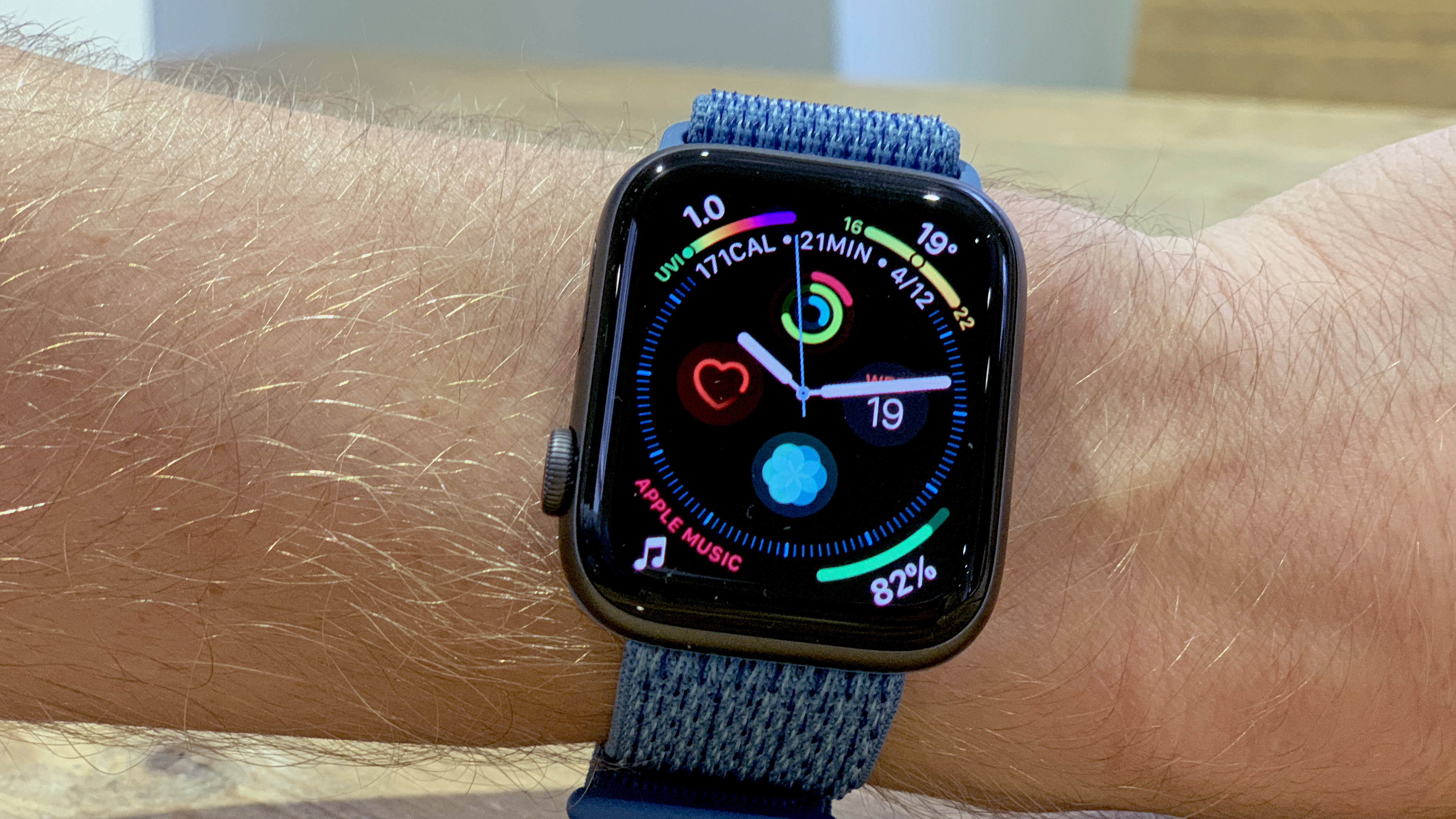
Against the backdrop of a spec-filled smartwatch industry, it would be easy to dismiss the Apple Watch, perhaps even for the lower battery life and lack of sleep tracking alone - but that would miss the key point that the Watch 4 feels slick, fast and integrated with your smart life.
There’s something so cool about just raising your watch to your mouth, asking it to turn on some lights and it doing so without an issue (although we did have to ask it do that very thing three times before it would work).
It’s also awesome to just get running and know the Watch 4 is going to give you good information on how you’re getting on and add that to the digital picture of your daily health progress.
At the same time, there are still a few rough edges in the device - it can be tricky to pair if you’re dealing with multiple devices. Siri can sometimes hang and feel like it’s ignoring you. A ‘sensed’ workout isn’t as accurate as it could be.
There’s nothing in here that’s terrible, but it’s worth noting the slight bumps if you’re going to spend so much on a timepiece like this.
Who's it for?

This is an easy one: anyone with an iPhone who wants to improve the experience. A loved one who’s thought about an Apple Watch before? Give them the upgrade - they’ll definitely feel it’s a big improvement.
We wouldn’t say that the LTE element is really that necessary, because you’ll be paying something of a premium to have that data sent to the Watch every month, and sometimes it’s just nice to switch off, rather than being contactable all the time.
It’s also going to be a good device for those with heart complaints - the ECG capability is truly game-changing for those people - or those who might be susceptible to a fall.
That said, the shorter battery life and the need to charge all the time might be an issue for that group - it’s worth thinking about whether this expensive, multi-faceted technology will really be of benefit.
It’s also an excellent gift (whether for others or yourself) for those who are determined to get fit and are just starting out on their journey - the smart prompts and additional information on how to get there really help.
Should I buy it?
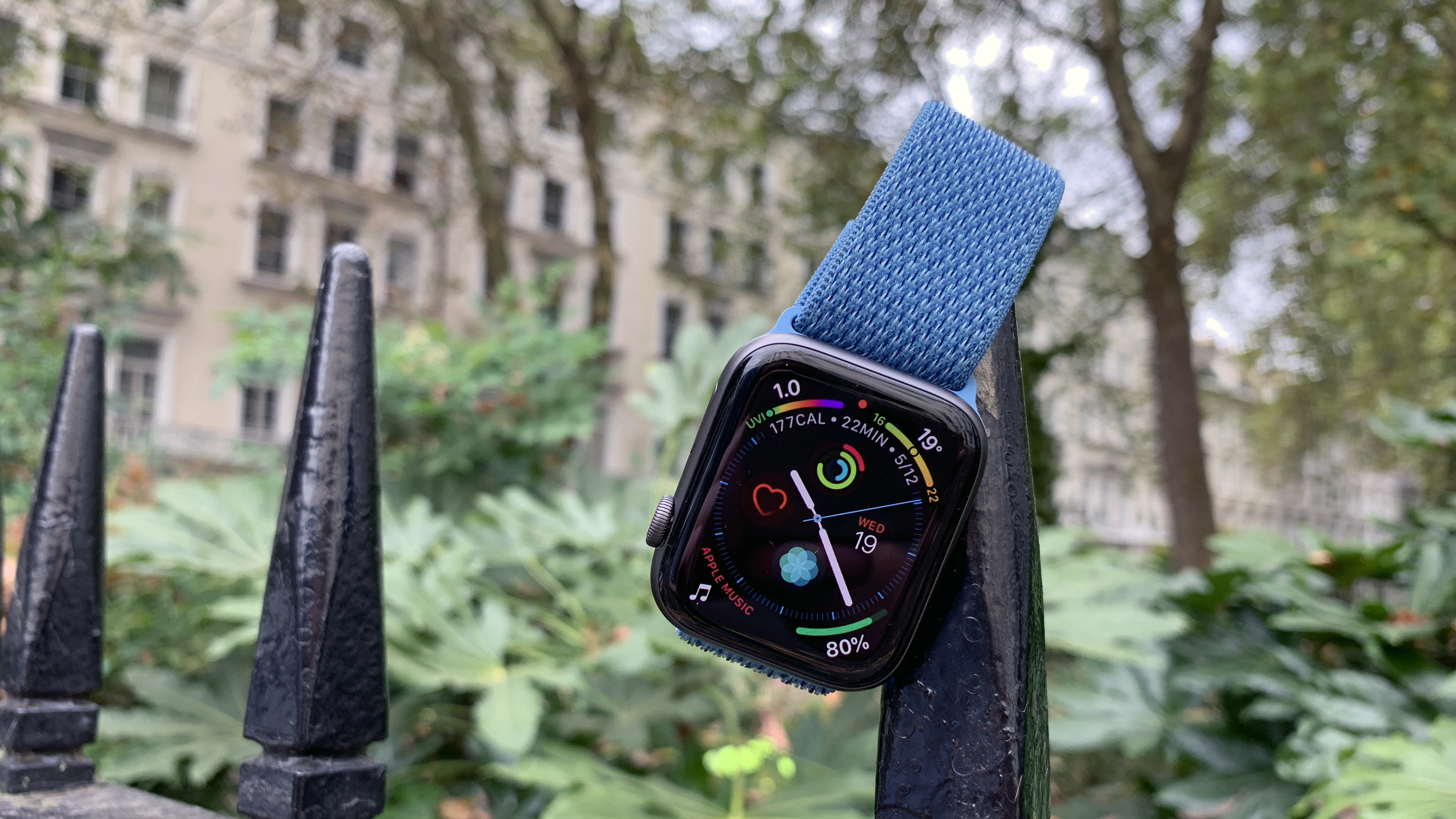
If you don’t have an Apple Music subscription or loads of downloaded MP3s, we’d suggest you think long and hard about buying this Watch if you’re considering using it as an exercise tool.
If you’re just going to be streaming Spotify off your phone, then it’s fine, but the Apple Watch series is working better and better without a phone connection, and Apple Music is a big bonus in that, as it syncs across so well.
As a gift for a loved one though, it’s excellent - and the larger size, snappier performance and health pushes are nice upgrades to an already decent smartwatch.
Over and out.
First reviewed: September 2018
The competition
Worried that the Apple Watch 4 may be too big, or not feature-rich enough and want to know what other options you have?
Well have no fear, as we've pulled together some of the best alternatives to Apple's best smartwatch:
Samsung Galaxy Watch
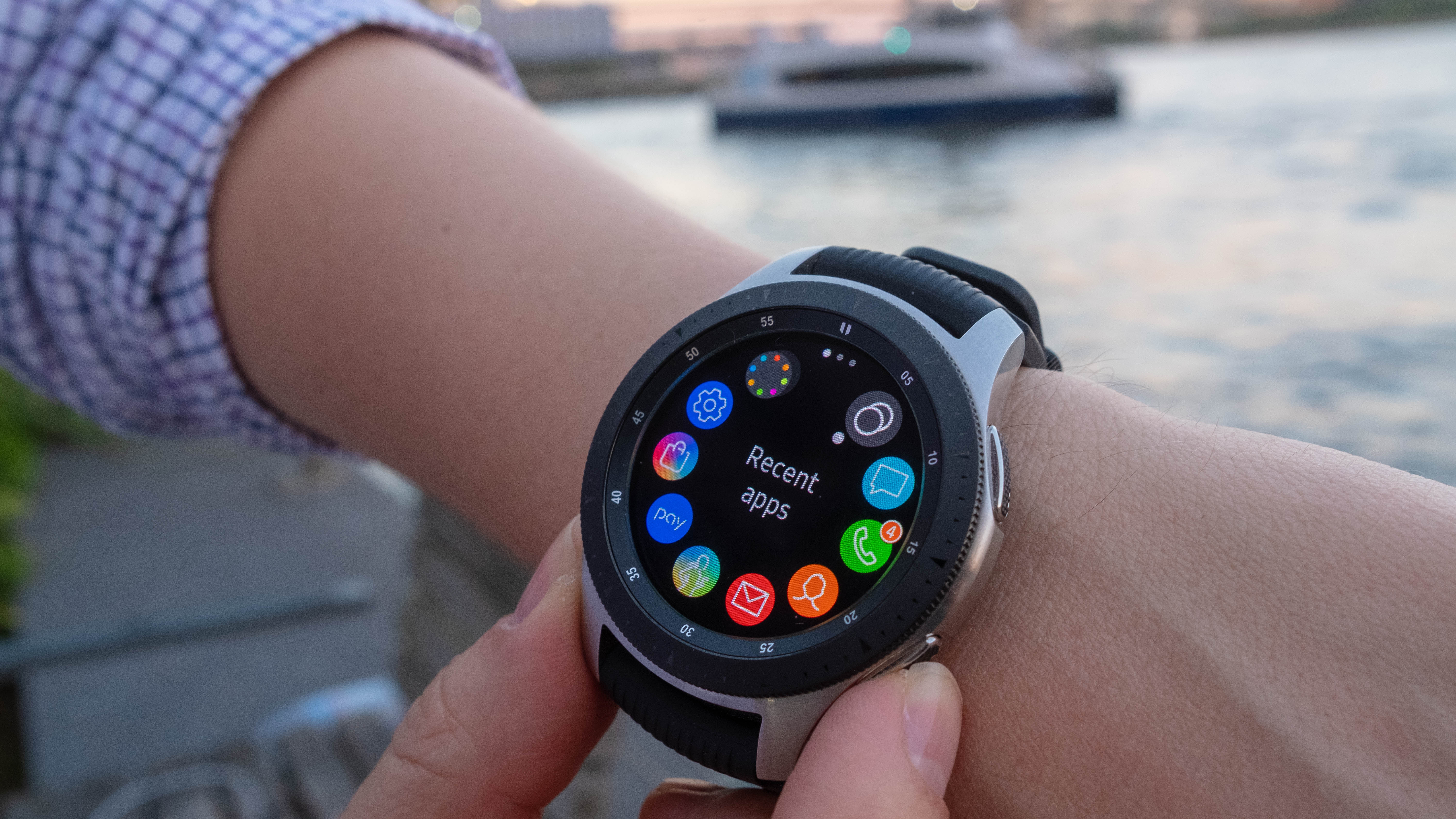
The Samsung Galaxy Watch has a few key advantages over Apple’s fare in that it can match many elements, but improve on some too. A longer battery life is the key difference here, and it can run off an iPhone or Android phone with ease.
It’s an equally good fitness tracker, has Spotify offline streaming on board and offers a round face which, although not as functional, some do find more aesthetically pleasing.
- Read our Samsung Galaxy Watch review
Apple Watch 3

Still on sale even though its successor is out, the previous model is a lot cheaper and will be able to handle the upgraded WatchOS 5 features with ease.
There’s very similar exercise tracking on offer, a vibrant (if smaller) screen and the same Apple Music and podcast playback capabilities - it just depends whether you want any old Apple Watch, or the latest and more impressive.
- Read our Apple Watch 3 review
Garmin Forerunner 735XT
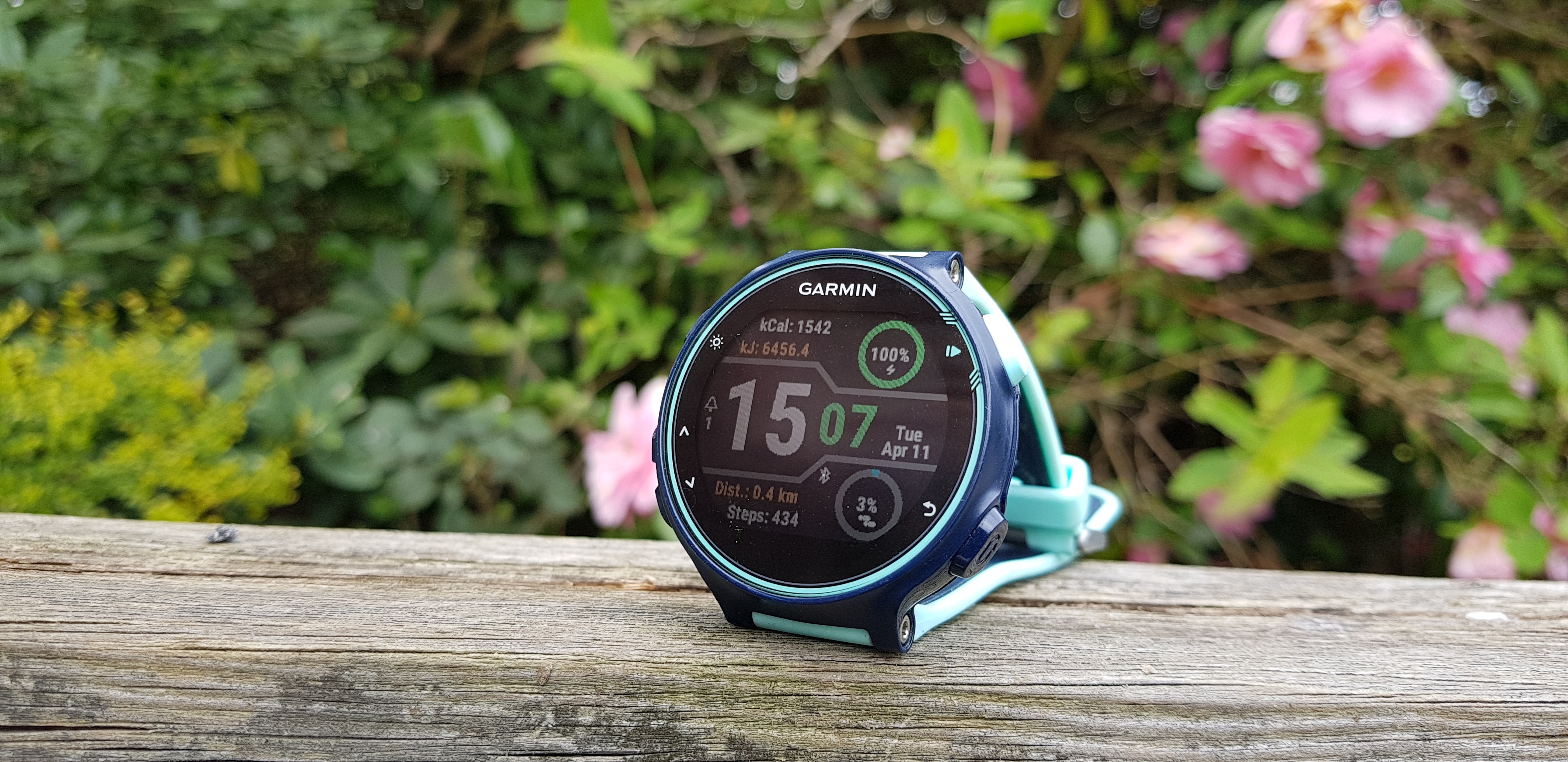
For the fitness enthusiast out there, we’d recommend not going for the Apple Watch 4 and plump for something more dedicated instead - and we’d pick this as a good option.
Capable of triathlon monitoring, it’s got the key exercises tracked. It’s got smartwatch capabilities for displaying your messages and calls, has a mega battery life of around seven or so days and syncs easily with Strava. It’s a more targeted device, but our pick of the bunch for them.
- Read our Garmin Forerunner 735XT review
0 comments:
Post a Comment